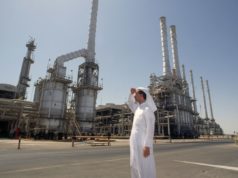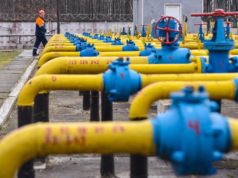With prices hovering around $100.00 per barrel, new oil being pumped in the U.S. at a rate not seen since Alaskan oil really began to flow in the 1970’s, and natural gas reserves growing by amounts never before seen, few if any prognosticators are harping about “peak oil” and/or looming oil and gas shortages. Just a few years ago, things were quite different with analysts of all stripes arguing that oil was nearly tapped out and the United States needed to plan for a post-petroleum future.
Hydraulic fracturing, or fracking, has revolutionized the production of oil and natural gas. The injection of a mixture of water, sand and a small amount of other additives deep into the ground to fracture rock formations, releases isolated pockets of oil and gas that are otherwise inaccessible. Technological advancements coupled with increasing demand for oil and natural gas has turned this shale drilling into a bright spot for the U.S. economy.
Fracking’s Results
Fracking is already responsible for more than 30 percent of U.S. domestic oil and natural gas reserves and the National Petroleum Council estimates that 60 to 80 percent of all wells drilled in the U.S. during the next decade will require fracking to remain viable.
Natural gas has become the fuel of choice for base load electricity generation, as well as the go-to fuel for peaking power. In addition, a number of commercial truck fleets and municipal bus fleets have been or are being converted to run on natural gas. These choices would not be viable without vast natural gas reserves. Just 15 years ago, analysts were predicting the U.S. had only had 60 years of natural gas supplies at then current rates of use. Now, with much higher use, fracking has increased reserves to the extent that at current use, researchers believe we have enough natural gas reserves for 100 years or more.
The Marcellus Shale formation has been called the Saudi Arabia of natural gas. It underlies more than 95,000 square miles stretching from Tennessee under Lake Erie into Ontario, Canada and from Ohio and Kentucky in the West to the Eastern seaboard. By comparison, the portion of the Barnett Shale formation in Texas that is capable of natural gas production underlies approximately 5,000 square miles of land.
While it is unlikely that all of it contains natural gas, the portions that do are estimated to contain enormous amounts. State University of New York geology professor Gary Lash calculated that just the portion lying between New York and West Virginia might contain 490 trillion cubic feet (TCF) of natural gas. If just 10 percent of that is recoverable, 49 TCF it would be enough to satisfy approximately two years total U.S. consumption, with a total value of approximately one trillion dollars. Other estimates are more generous. In April 2009, the Department of Energy estimated that the Marcellus reserve could contain upwards of 262 TCF—more than six times Lash’s estimate.
This is just one shale formation; there are others, including the Barnett and Eagle Ford formations in Texas; Haynesville and Tuscaloosa in Louisiana; Utica Shale underlying a number of Eastern States and Quebec; the Bakken formation underlying a number of mid-continent states; and California’s Monterey Shale.
A number of these are more promising for their oil reserves than natural gas, but in either case the reserves are plentiful.
Regarding oil, in two short years production from fracking has nearly reversed a 20-year decline. In 1990, the U.S. produced approximately 8.5 million barrels per day of crude oil. By 2009, that had dropped, for a short time, to just 4 million barrels per day. Since 2010, oil production has increased to about 7.5 million barrels a day as higher prices make older capped wells viable again plus fracking. Since the summer of 2011, the U.S. has experienced a 2 million barrel per day increase in crude production. Fracking in the Bakken formation has taken North Dakota past Alaska and California to make it the second largest oil producing state behind Texas.
Coinciding with the increase in oil production has been a substantial decrease in consumption. Ongoing economic struggles and drivers shifting to more fuel efficient vehicles led to an 8 percent decline in transportation fuels since 2007. As a result, U.S. oil imports have declined to the lowest levels since the early 1980’s.
Should new coal terminals be allowed and existing liquefied natural gas terminals be converted to export and new terminals be built, the U.S. could become a substantial energy exporter. These projects, however, have been slow developing due to recalcitrance on the part of federal and state authorities to approve them.
This is not the same as “energy independence,” a concept that is not useful. While demand has moderated in many Western countries, it is increasing in the developing world led by China and India. At the same time, production is down substantially in Libya, Iraq and Venezuela among others. These factors have combined, despite increased production in the U.S., to keep oil prices high. Because oil is traded in a world market, and the U.S., like other countries will seek the cheapest supply, domestic oil and gas prices will continue to be driven by factors largely outside our country’s control. The quest for independence will lead to a waste of human and financial capital that would be far more economically harmful than any supply shock could ever be.
Government: Hurting Not Helping
Though energy independence may not be desirable, even if possible, the U.S. would still benefit from less dependence on factors outside of our control. In fact, oil and gas production should and would be increased if the federal government removed various barriers to greater production and would avoid erecting new ones.
President Obama bragged, “Oil production has increased to the highest levels in 16 years. Natural gas production is the highest it’s been in decades.” While he is correct, little to none of the credit is due to his policies. Almost all the increase in oil and gas production has occurred on private or state lands, especially in North Dakota, Montana and Texas. Natural gas production from federal areas has declined while natural gas production overall has increased considerably due to fracking.
While new leases and acreage leased on federal lands have declined, oil production from existing leases increased 13 percent over the past four years (despite last year’s significant decline). This increase may come to a halt if new oil and gas leasing and production regulations from the Obama administration under development, already proposed, or previously approved and soon to take effect, actually take effect.
According to a 2012 Energy Department study, sales of oil from federal areas fell 14 percent between 2010 and 2011 and sales of natural gas production fell 9 percent. The lower oil production was largely the result of a moratorium on offshore drilling imposed by the Obama administration, which a federal court twice found illegal. Natural gas production from federal areas is declining because drillers have found vast reserves of natural gas in formations under several states that are cheaper to access than most federally controlled areas.
Current restrictions on offshore oil production and on public lands across the west and in Alaska are preventing the exploration and production of tens of billions of barrels of oil and trillions of cubic feet of natural gas. Any of these would increase supplies, reduce prices and imports and provide high-paying jobs to Americans.
The administration is considering making things worse. Despite study after study indicating that fracking has few if any negative environmental consequences—with those few harms found to be the result of bad operators cutting corners, not the process itself—the administration is considering further restrictions on fracking operations on public lands and stricter regulations on ongoing operations on private lands. The EPA has already tried to halt a number of operations, only to have to back down when challenged in the courts.
Until fracking can be linked definitively to a problem that is inherent in the process itself, the federal government should take the mountain of evidence that fracking is safe as dispositive and streamline the permitting and leasing process for fracking on public lands—leaving private land regulations to the states—in order to reap the fiscal, economic and energy bounty that fracking produces. If problems arise, regulations can be tailored as narrowly as possible to fix problem identified as opposed a blunderbuss approach that treats the entire process or its results as suspect.
What about electricity?
The biggest energy challenge facing America is the need to expand, upgrade, modernize and better protect America’s electric grid. The grid consists of more than 6 million miles of transmission and distribution lines owned by more than 3,000 highly diverse, investor-owned, government-owned, and cooperative enterprises
Several challenges face the companies and public agencies that own, operate and or oversee the grid. First, it is woefully outdated. Much of the electric power delivery infrastructure, the towers, the transfer stations, and the wires are over forty years old; over 75 percent is 25 years or older. For years, investment in new wires and towers has lagged behind the expansion of power generating sources and demand for power. This, combined with recent storms, has contributed to ever increasing outages in recent years. Power outages cost $18-33 billion per year, according to a report issued in August 2013 by the Obama administration and that figure has risen steadily over the past 20 years. Every new notebook, smart phone, electric car, HDTV and entertainment center draws and more and more energy, and the grid has just not kept pace.
Recently, grid owners and operators have been investing more in expansion and upgrades. Between 1994 and 2003, 200 utilities nationwide spent an average $7,185/year on devices and station equipment per mile of transmission. Between 2003 and 2012 that amount had grown to an average of $21,514/year per mile of line. The Edison Electric Institute notes that its members spent $ 11.1 billion on transmission infrastructure in 2011 alone, and project to spend an additional $54.6 billion through 2015. This is significant, but pales in comparison the more than $800 billion investment in grid growth and modernization estimated to be needed by 2030.
Simultaneous with the expansion of the grid, the federal and various state governments have been working to “nationalize” it, which means not to put it under government ownership but to have it interconnected with multiple pathways and redundancies from region to region across the nation. A nationwide grid should reduce routine outages caused by localized or in some instance even regional events. However, it would make the entire electric system more vulnerable to cyber terrorism and calculated multiple power grid strike events. Recognizing this threat, the government and the private sector are devoting increasing resources to hardening the grid with the goal of making it less likely that if a cyber-attack occurs, it will have a large scale effect.
“Green” Technology
Operators must also contend with the complicating factors of new smart grid technologies and an increasing amount of variable, intermittent power introduced into the system from both distributed and centralized “green energy” sources such as wind and solar power. Smart grid technologies hold the promise of more efficient grid operation, improved, smoother power flows, quicker responses to demand, fluctuations, and prices, but integrating the first generation of them into the grid is fraught with all the difficulties of any new technology. There is a learning curve for the operators and end-users and there are bugs, which, along with a natural resistance to change, sometimes breeds suspicion and slow adoption of the new technologies.
Perhaps the most vexing issue is “green power.” Government policies in this regard are undermining grid reliability and increasing outages because the intermittent nature of green sources of electricity decreases the stability the system needs. Traditional power plants produce a relatively consistent, constant flow of electricity. Wind and solar power are inconsistent: wind speeds and sunlight intensity vary sometimes by the moment; and the duration of consistent winds or sunlight is also variable in the extreme. This makes keeping a consistent power flow through the grid very difficult. Yet, federal and state incentives and subsidies to produce wind and solar power or—even worse—mandates for the use of green power provide that the power must be generated and fed into the wires regardless of the costs or the havoc it plays with the reliability of the system.
Furthermore, unlike traditional power plants that can be built in the region or area where demand for increased power is required, solar and wind farms must be built where the wind blows fairly constantly or where the sun shines with regularity—and these are often hundreds of miles from where the power is needed. Wind and solar farms thus require more transmission construction than traditional power sources, and a greater portion of the power is lost during transmission. While new technologies can reduce the amount of power lost to transmission, they are expensive and not commonly installed. In addition, much of the power will continue to be carried, for the near and mid-term at least, through older less efficient power lines and transformers.
Rather than making the grid less stable, federal and state legislatures should end green energy subsidies and mandates and allow the grid time for its much-needed renewal. Then, if green energy has something to truly contribute, it will be added back into the system by market forces.
The U.S. has abundant power supplies that could be developed to a greater extent and used more effectively if only the government would reduce barriers to development and end mandates and market distorting subsidies.
H. Sterling Burnett, Ph.D. is a Senior Fellow at the National Center for Policy Analysis, where he is an authority on energy and environmental issues.





